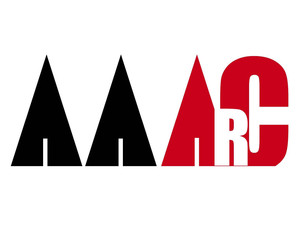
AAArC –
African Archaeology
Archive Cologne
to the archive >>>
Open Online Archive for the archaeology and environmental history of Africa
For more than fifty years, archaeological research in Africa is conducted at the Institute for Prehistoric Archaeology of the University of Cologne. While rock art research started in Namibia in 1963, North-Eastern Africa became the second core area since the early 1980s – until then both areas were mostly terra incognita concerning prehistoric research. Besides rock art the focus of the various projects was especially on the human-environment relationships. Internationally known projects are among others were "The Rock Paintings of the Upper Brandberg" (1977-2006)* and "Settlement history of the eastern Sahara (BOS)" (1979-1993) as well as the Collaborative Research Centre 389 "ACACIA" (1995-2007)**. The African Archaeology was established in 1984 at the Institute of Prehistoric Archaeology and is home to extensive collections of finds, excavation reports and photos of these large-scale projects, as well as material from a number of individual projects. There are also documents and find collections that came from outside to the institute. The African Archaeology stands in close cooperation with the Heinrich Barth Institute e.V., especially with its publishing.
All these testimonies of African archaeology and environmental history are of great international interest. Although significant outcomes of the major and some smaller research projects were published (15 large-format monographs on the rock art of southern Africa and its archaeological context, and 20 volumes on the Prehistory of Africa, almost all published by the Heinrich Barth Institute e.V.), but to date a permanent and homogenous archiving of the entire basic stocks is still pending. This is the task of the AAArC project, which has been saving digitally extensive parts of the collection since 2012.
For the curation process of the archival materials a standardised operational sequence was developed in which newly created digital copies as well as genuinely digital data is indexed and stored in the database in one single process sequence.
So far, about 60,000 digital copies were created with a storage volume of more than 4 TB, among them as the largest assemblages:
- Slides (Hasselblad and 35 mm)
- Paper documents (mainly excavation records) and
- about 20,000 genuinely digital images
The storage of data in AAArC follows a principle of geographical order that is built up hierarchically: country, region, area, and site / feature. 15 integrated metadata have been defined which are attached to each digital image. Access rights are defined for each image ranging from 'open to all' (category 1) to 'open with a legitimate interest' (category 2) to 'locked, with the possibility of release only through the data controller' (category 3). Metadata and access rights are the basis for a search in the database.
In order to ensure a sustainable data storage of AAArC’s content, the project uses the infrastructure of ARACHNE, the central object database of the German Archaeological Institute (DAI) and the CoDArchLab at the University of Cologne. Moreover, there is close cooperation with IANUS (Research Data Centre Archaeology & Ancient Studies) that also belongs to the DAI. Technical support for AAArC is given by the Regional Computer Centre of the University of Cologne (RRZK).
The archive is designed to be not only an image database, but also a comprehensive presentation of data and documentation that allow for an archaeological processing. With the possibility of retrieving materials and documents from a database permanently accessible, these are made available for the scientific community, especially colleagues and students in the African partner countries. At the same time, a path is taken, partly to preserve unique colour photographs from decay.
Schwerpunktprogramm
"Entangled Africa"
Im DFG-Schwerpunktprogramm SPP 2143 “Entangled Africa”, einem Verbund zahlreicher Projekte, die sehr reichhaltige und vielgestaltige Daten aus Archäologie, Geschichte, Sprach- und Geowissenschaften generieren, wird ein zentrales Datenprojekt die Informationen für gemeinsame Fragestellungen der Projekte managen. Dies soll im Projekt “Erfassen und Verknüpfen” geschehen, das auf AAArC fußt und sich als Service-Projekt versteht und somit für alle zehn Forschungsprojekte des SPP das Datenmanagement und die Langzeitarchivierung der Forschungsdaten organisiert, gestaltet und realisiert. Die Machbarkeit dieses umfassenden Anspruchs ist dadurch abgesichert, dass “Erfassen und Verknüpfen” auf seine Einbettung in Arachne baut und somit Bestandteil der iDAI-Welt ist.
Publications of the AAArC project:
Eymard Fäder: The Open Archive Cologne for Archaeology and Environmental History in Africa.
Paper presented at the section “What to do with my data? For long-term management of research data in the Ancient Studies”. The section was organised by the DAI and IANUS during the 8th GERMAN ARCHAEOLOGICAL CONGRESS on 08 October 2014 in Berlin.
Download as <<<pdf>>>
Team members and project management (in alphabetical order): Johanna Dreier, Eymard Fäder, Friederike Jesse, Rudolph Kuper, Tilman Lenssen-Erz, Finn Prox, Joana Wilmeroth
Former team members and project management (in alphabetical order): Andreea Darida, Simon Hohl, Norman Klahre, Jan Kuper, Tim Piccolini, Jürgen Richter, Maya von Czerniewicz
Förderung: DFG, LIS-Programm
* http://www.uni-koeln.de/sfb389/staff/lenssen-erz/lenssen_erz_projekte.html#1
** http://www.uni-koeln.de/sfb389/